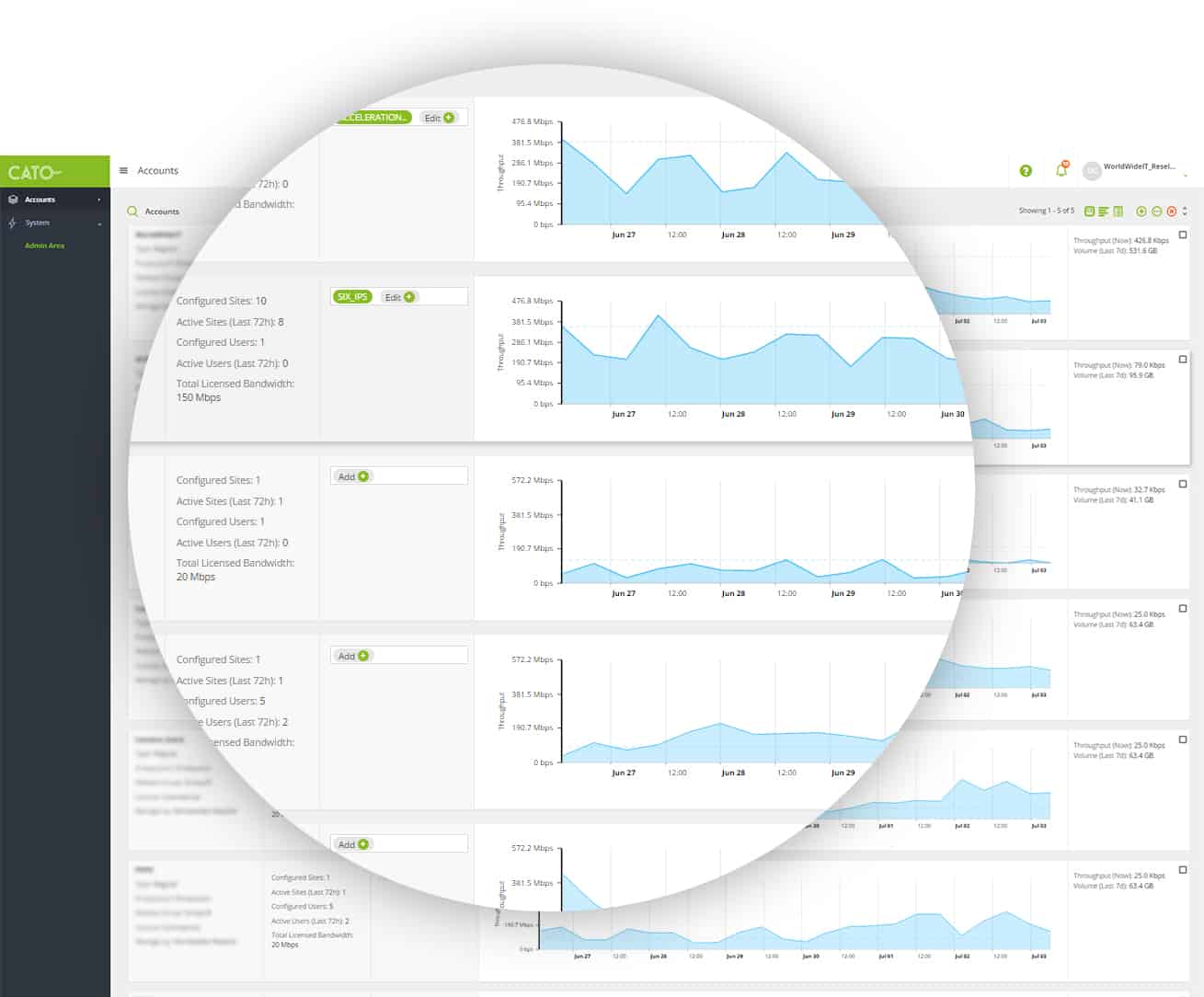
Managed Services
Managed IT Provider Eliminates Appliance Sprawl, Improves Security Capabilities
The Journey to Cloud-based Security Services
Why were you looking to change your security architecture?
We initially went out to market because of SSL inspection. Our firewall appliances did not have the necessary capacity. The capability was available with additional licensing, but not the capacity.
What approaches did WWIT consider?
We evaluated and did a lot research on many vendors and then tested a smaller pool of them. The second choice was a leading Secure Web Gateway (SWG) provider. The company really provided a web filtering solution with Data Loss Prevention (DLP) and other features built-in. The offering didn’t have full firewall capabilities so we couldn’t replace the customer’s firewall appliance, which would have led to higher costs and more management overhead.
Why did you choose Cato?
The flexibility we got with Cato Cloud, and particularly with the SSL inspection, meant we didn’t need to upgrade any hardware on-premise to inspect all necessary traffic to keep customers safe. Looking at Cato’s overall platform, I think there’s a more complete vision than other vendors who are primarily web gateways. The tipping point was Cato’s easy deployment and the ability to roll out rapidly to customers.
The Benefits of Cato’s Firewall as a Service
A converged security service aligned well with WWIT’s need?
That’s right. A lot of the competitors we reviewed were simply web filters with a lot of services built on top of that. None of them were true cloud FWaaS with additional security services. I think even though Cato is a startup and a much newer company than some of the others we evaluated, the Cato leadership has a vision and approach to make the Cato Cloud a platform rather than just a single service offering. It’s a distinction I like. I also liked the team behind Cato. The executives’ track records in previous companies, and the work they did in building innovative solutions is a plus.
Sounds pretty compelling. Is there any reason why someone may opt not to deploy the Cato platform and remain with an appliance?
Playing the devil’s advocate here, you’re relying on Cato to handle all of your traffic and security services. You must ensure anyone doing that has a robust platform, the uptime to meet your needs, and those sorts of things. From a purchasing standpoint, it’s the sort of thing that would have to be vetted by any organization. I looked at the Cato Cloud architecture and was very impressed by the degree of redundancy built into the network.
How does Cato help with the biggest security threats concerning your customers?
Our customers are particularly concerned with web-based threats, more specifically a lot of the newer variants of ransomware and crypto-types of malware. Those are really rampant. They may come in as an email, but they’re just a link to a web-based threat. Cato gave us the ability to actively scan traffic and stop those attacks. This is particularly valuable for small offices that lack the resources to purchase a robust network security stack. With Cato, we could provide them affordable protection with the same kinds of policies and robustness that might have only been available in high-end appliances.
How are customers using Cato today?
Most of them are multi-offices and we use Cato to unify the policies and protection across them. For a lot of customers, it’s just to add extra layers of security. You can deploy Cato with Cato Sockets (Cato’s hardware endpoints) or you can send your traffic through the existing firewalls. In some cases, we’re leaving existing firewalls in place because they’re new. Cato adds an additional layer of filtering and the capacity to do SSL inspection, which is one of the more important things with Web-based traffic. It’s not just distributed offices that describe customers, it’s also the need for extra security and eventually to replace their firewall as it ages and is no longer needed.
The Business Impact of the Cato Partnership
With which kind business problem did you find Cato especially helpful?
Acquisition, in particular, is a good example. We have customers who need offices brought online and connected in a very quick and efficient manner without a lot of upfront costs. Cato really fits that need to a “T”. One customer of ours has acquired many smaller shops in their industry. Rather than having to build the technology infrastructure stack at each new location, the customer utilizes Cato for connectivity and security in a very simple manner.

Can you describe your relationship with Cato so far from a partner perspective?
To us, Cato seemed to be both very channel-focused and very flexible. I think that’s an important distinction. A lot of vendors are not easy to work with and not flexible at all in what they offer partners. Cato’s open to getting ideas from us, and are capable of incorporating them into their platform very quickly.














